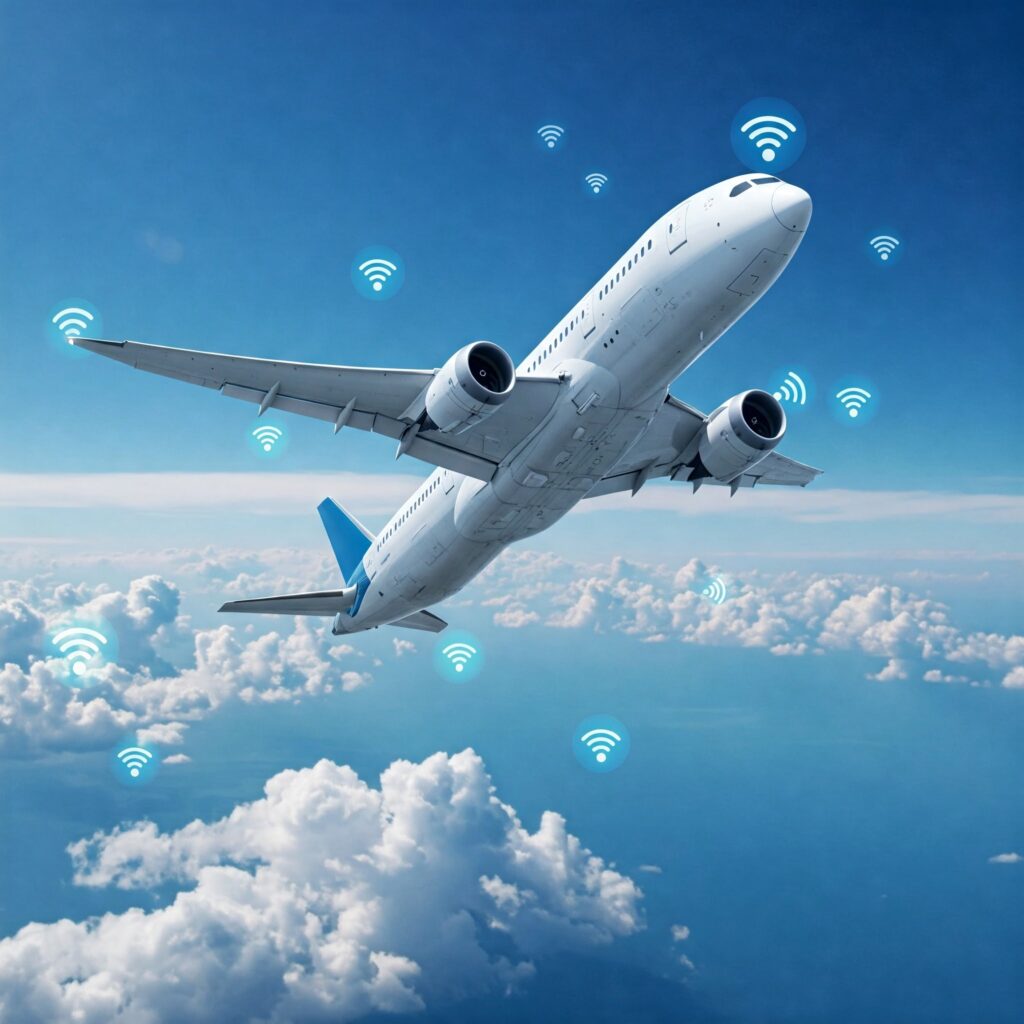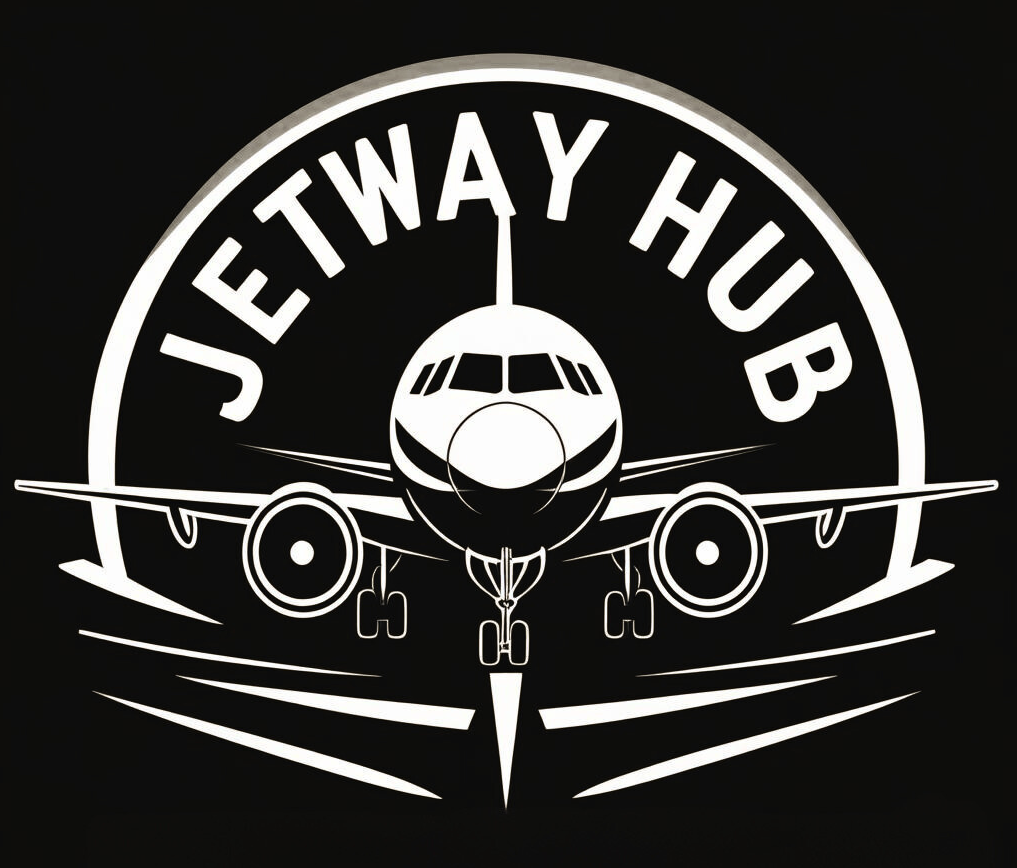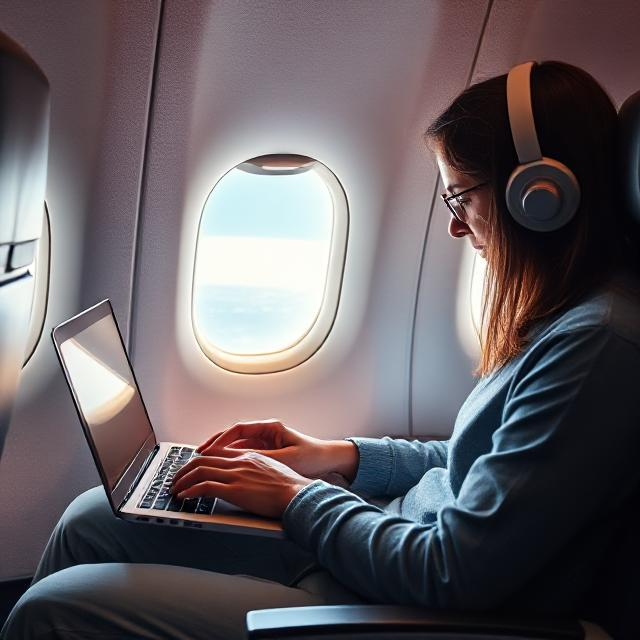Have you ever wondered how you can scroll through Instagram, fire off emails, or stream Netflix at 35,000 feet? Welcome to the age of blazing-fast in-flight Wi-Fi—a marvel of aviation and satellite technology reshaping how we fly.
In this post, we’ll explain how in-flight Wi-Fi works, explore the airlines leading the charge, and peek into the future of high-speed sky surfing.
The Technology Behind In-Flight Wi-Fi

Two primary technologies are powering in-flight connectivity:
Air-to-Ground (ATG)
Think of this like your mobile network—planes connect to ground-based cell towers. It’s most common in domestic U.S. flights and offers lower latency but slower speeds and limited coverage over oceans.
Example Provider: Gogo ATG Network (used by some regional U.S. airlines).
Satellite-Based Wi-Fi
This is where the magic happens. Planes connect to geostationary (GEO) or low-earth orbit (LEO) satellites, beaming data between the aircraft and Earth. Speeds are significantly faster, coverage is global, and it’s the preferred option for long-haul or international flights.
Example Providers:
- Viasat (used by JetBlue, Delta)
- Inmarsat GX Aviation (used by Singapore Airlines, Qatar Airways)
- Starlink by SpaceX (new entrant with lightning-fast speeds)
Fun Fact: Starlink promises speeds up to 350 Mbps—faster than many home networks!
Which Airlines Offer the Fastest In-Flight Wi-Fi?
United Airlines: United is rolling out Starlink across its fleet of over 1,000 planes, with testing starting in early 2025 and free Wi-Fi expected later that year. Passengers will enjoy gate-to-gate access for streaming, gaming, and more.
Hawaiian Airlines: The first U.S. airline to adopt Starlink, Hawaiian offers free Wi-Fi on its A321 and A330 fleets, earning rave reviews for connectivity on U.S.-Hawaii routes.
Qatar Airways: A global leader, Qatar equips its Boeing 777 and Airbus A350 fleets with Starlink, providing ultra-fast, complimentary Wi-Fi.
Delta Air Lines: offers free in-flight Wi-Fi through its Delta Sync Wi-Fi, powered by T-Mobile, for all SkyMiles members on most U.S. domestic flights. The service delivers fast, reliable connectivity that supports streaming, browsing, and even video calls across multiple devices. W
JetBlue: Since 2017, JetBlue has been offering free Fly-Fi via Viasat. It delivers speeds up to 20 Mbps, allowing video streaming and multi-device connectivity.
Spirit Airlines: Powered by SES-17 and Thales’ FlytLIVE, Spirit boasts some of the fastest Wi-Fi in the U.S., with speeds up to 400 Mbps for browsing and streaming.
The Future of Sky Surfing
The race for fast in-flight Wi-Fi is only heating up. With 5G in aviation, LEO (Low Earth Orbit) satellite constellations, and real-time streaming capabilities, the goal is simple: give passengers an in-flight internet experience that feels like home—or better.
Experts predict that free, high-speed Wi-Fi will become the industry standard by 2026, much like seatback screens and USB charging ports.
Why It Matters for Travelers
Fast, reliable Wi-Fi enhances the travel experience, keeping passengers connected for work or leisure. Whether it’s sharing real-time vacation updates or joining a last-minute meeting, airlines like United, Hawaiian, and Qatar are making “sky surfing” a reality. As satellite technology advances, expect more carriers to follow suit, with free Wi-Fi becoming the industry standard.


Leave a Reply